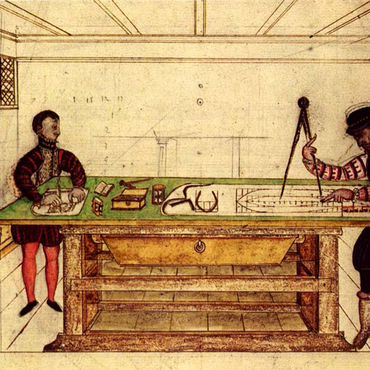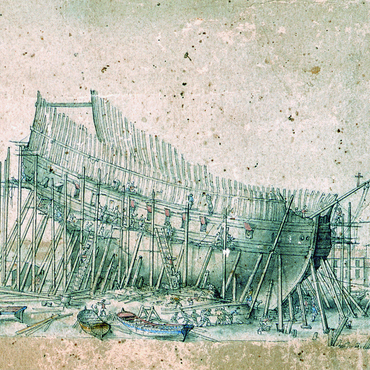
- Home
- Shipbuilding
- The shipwright
According to archival sources, the Dauphine was built by Philippe Cochois (or Cauchois), a shipwright who was active in the late 17th and early 18th centuries at the royal shipyard at Le Havre. Very few documents written by him have come down to us; as a consequence, we know little about him and even less about his techniques. In the early 18th century, naval architecture was a relatively recent science. It was only then that master shipbuilders, who for a long time had handed down their knowledge from father to son, began to codify their experience. A few of the very best shipwrights, freeing themselves from the empiricism of their predecessors, began to use mathematical curves to define the hulls of their ships. This movement, which began in England, came to France in the 17th century, where the first drawings saw the light of day around 1680. The procedure was initially confined to royal shipyards, where since the time of Colbert drawings, even sketches, had to be submitted to a construction committee. It was not until the 18th and even the 19th centuries that the practice became widespread and was taken up in private shipyards. Only the study of sunken hulls of wrecks can provide us with information about the methods and techniques used to build ships, whether in royal or private shipyards.




